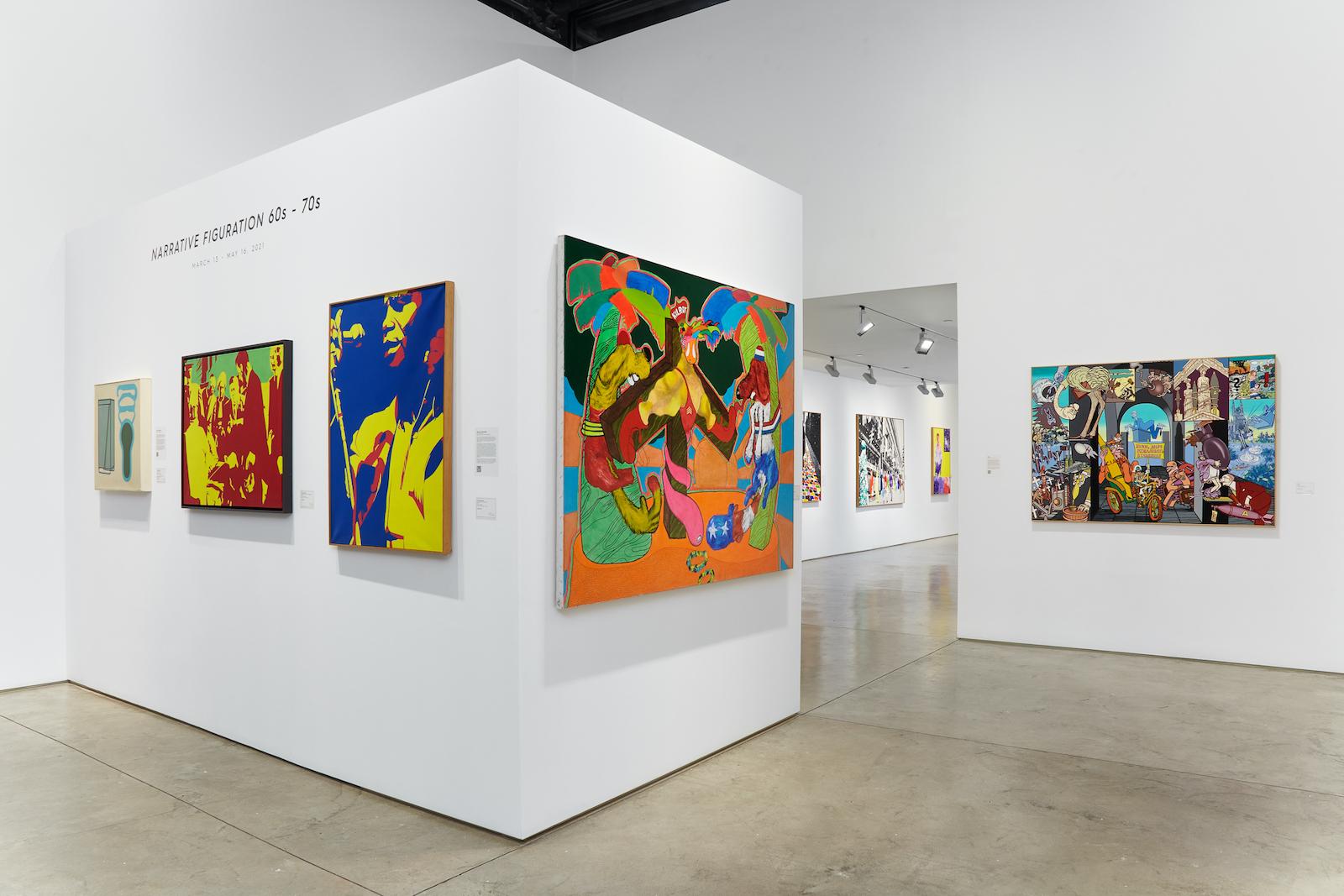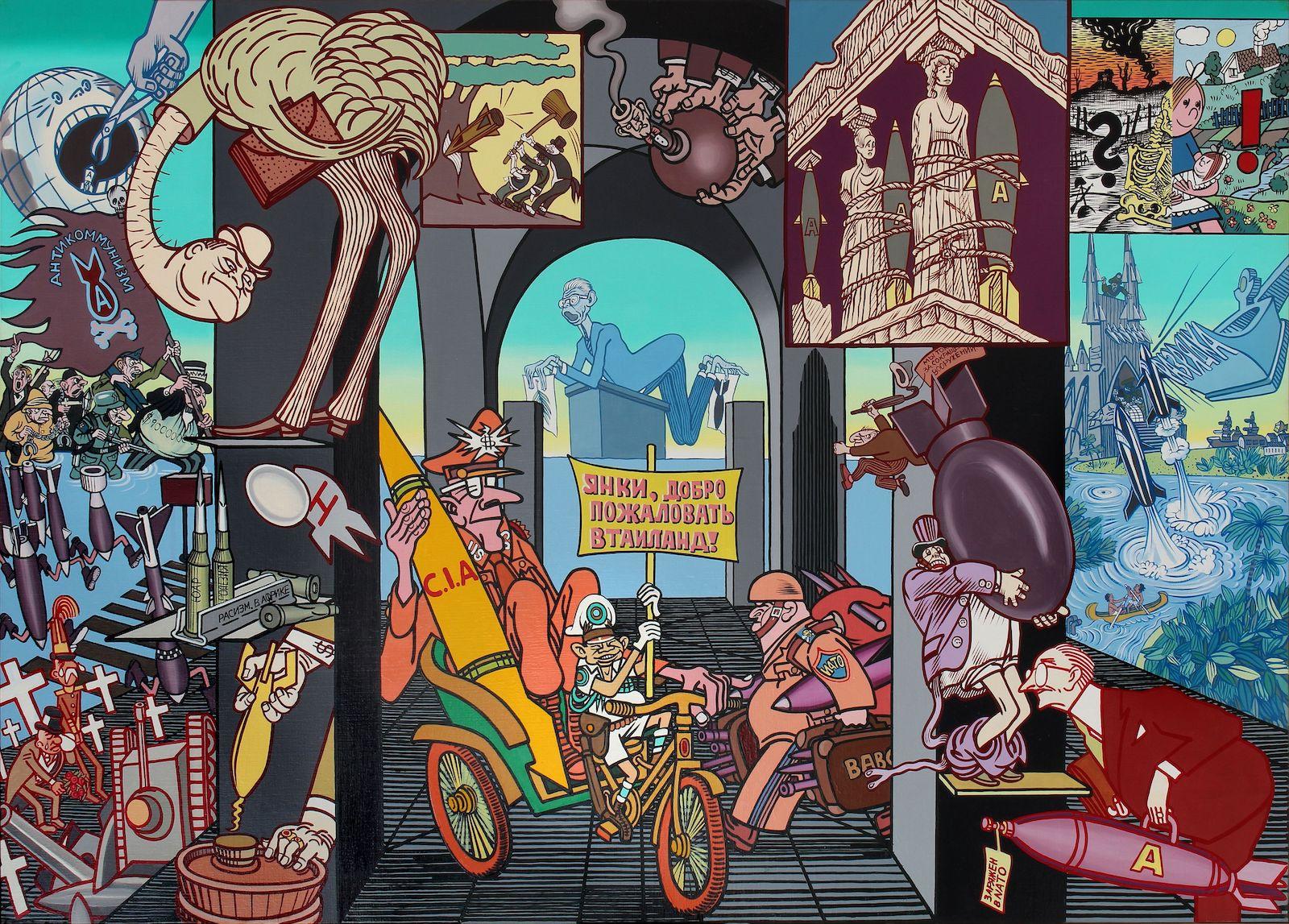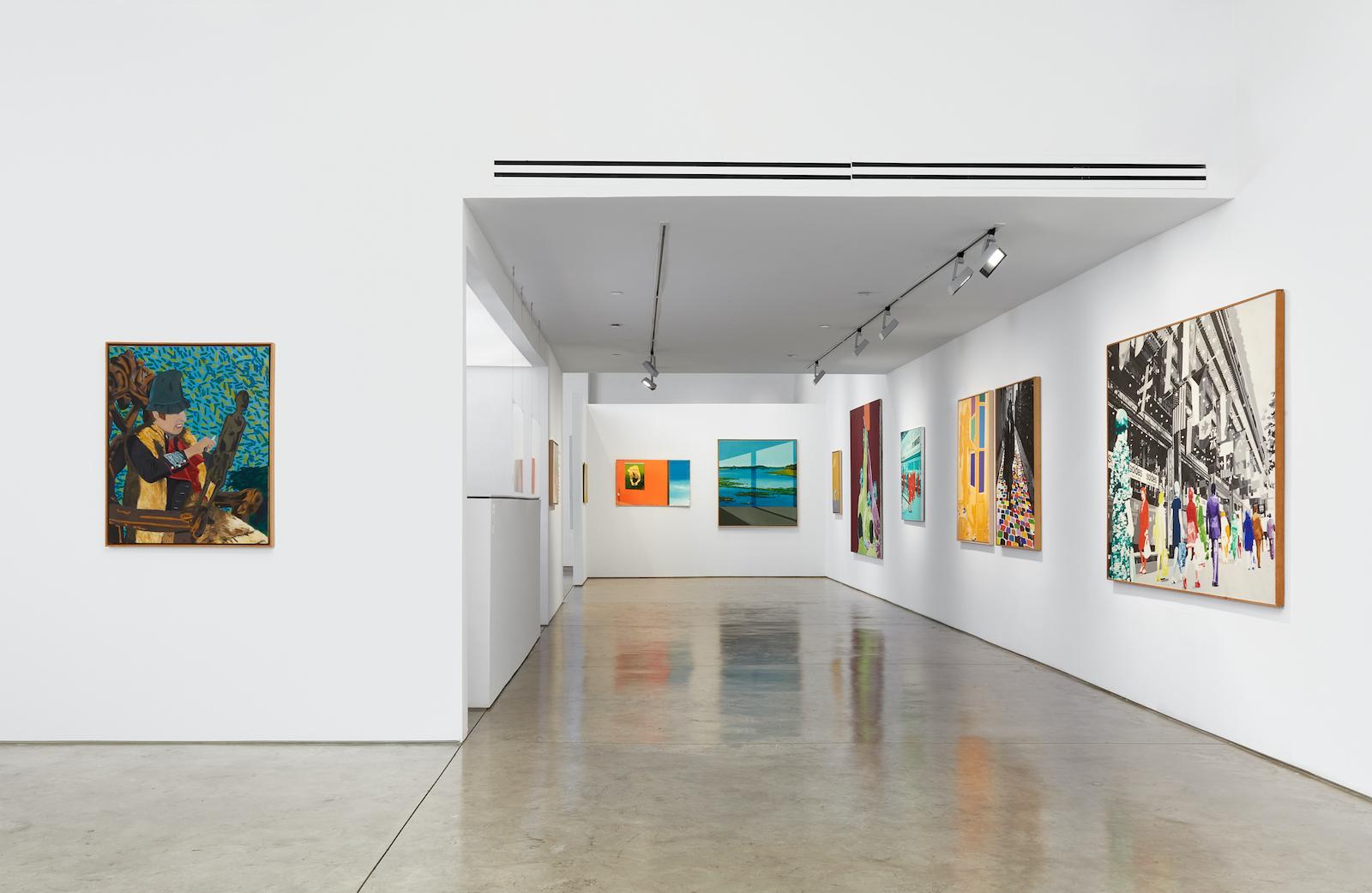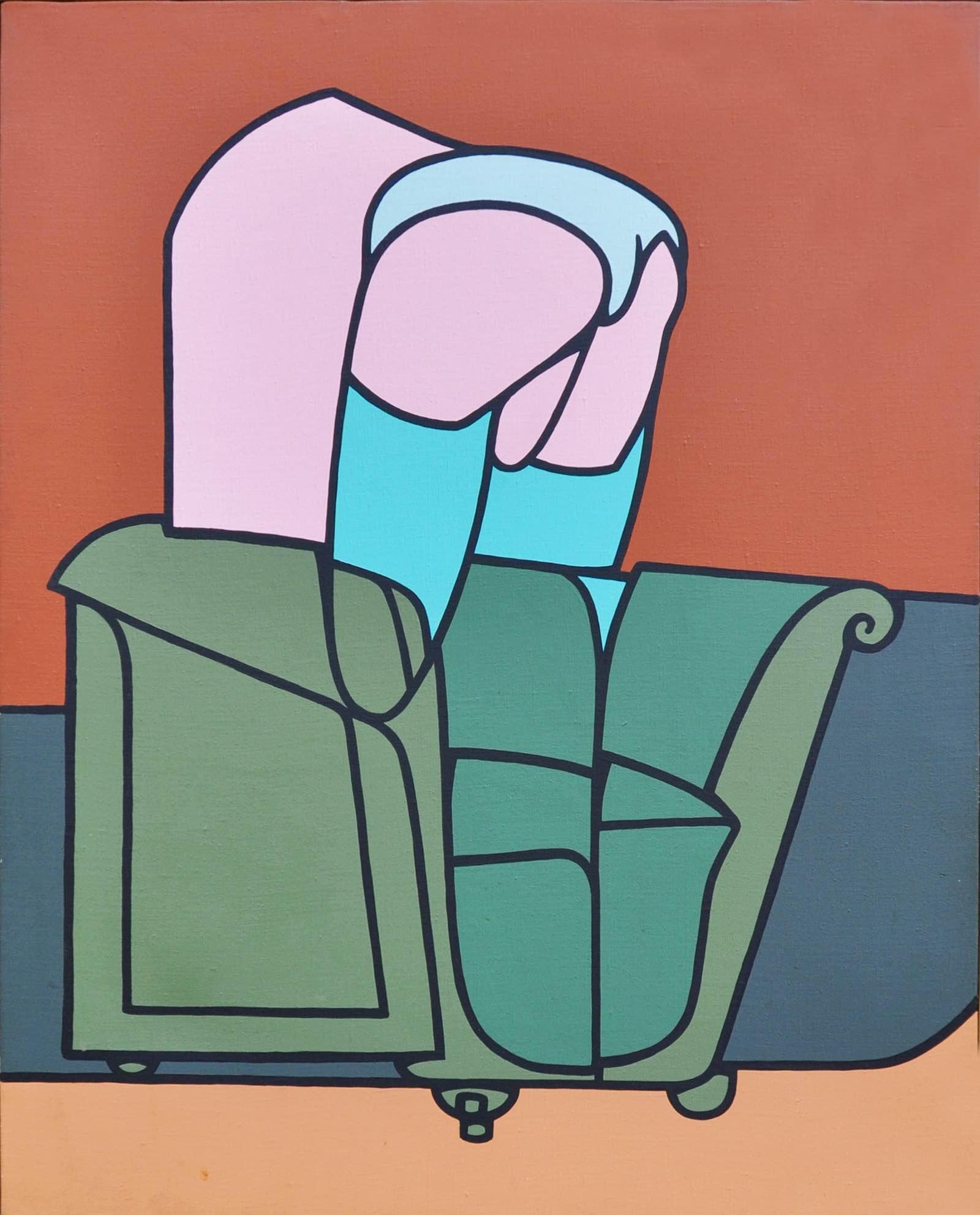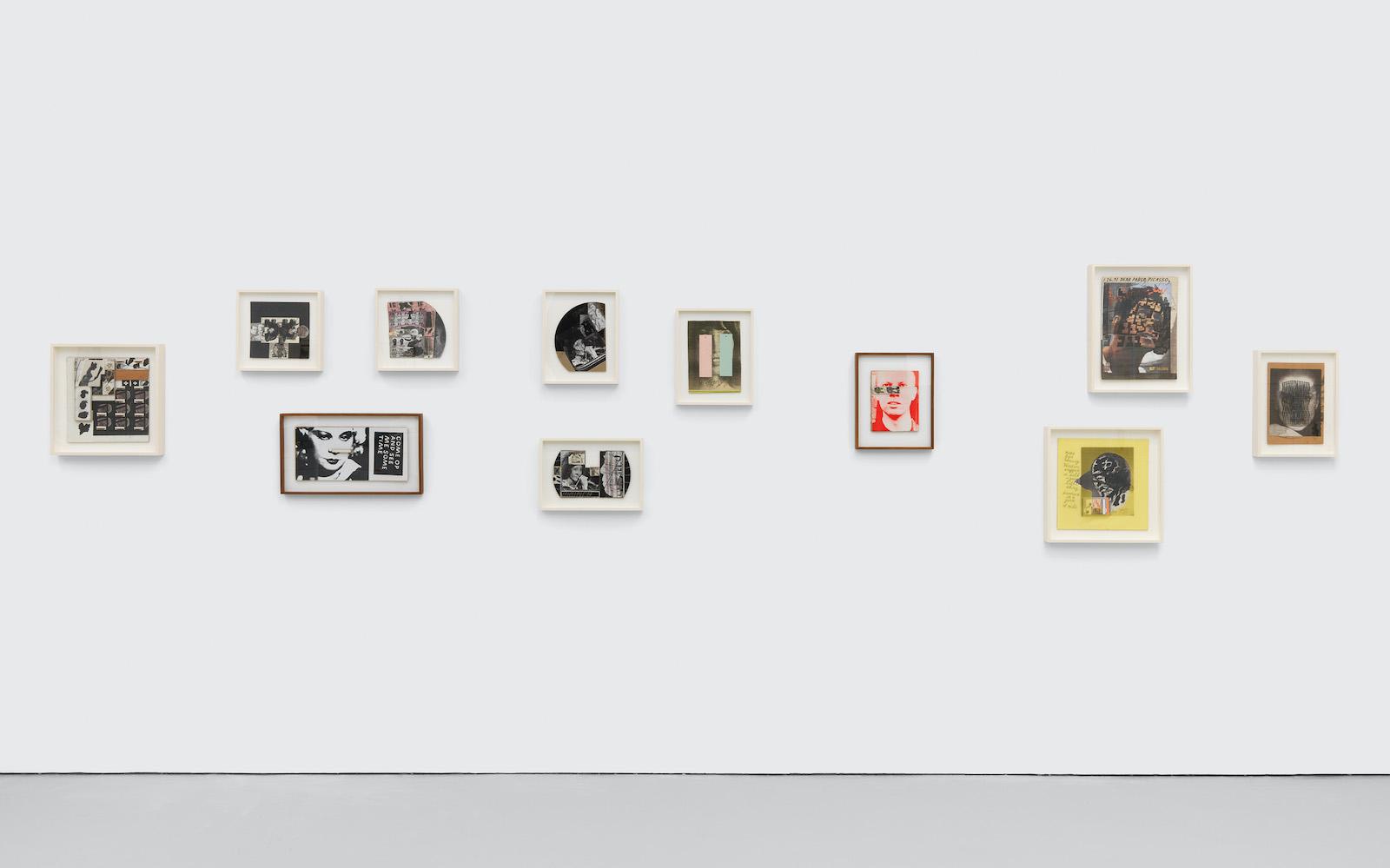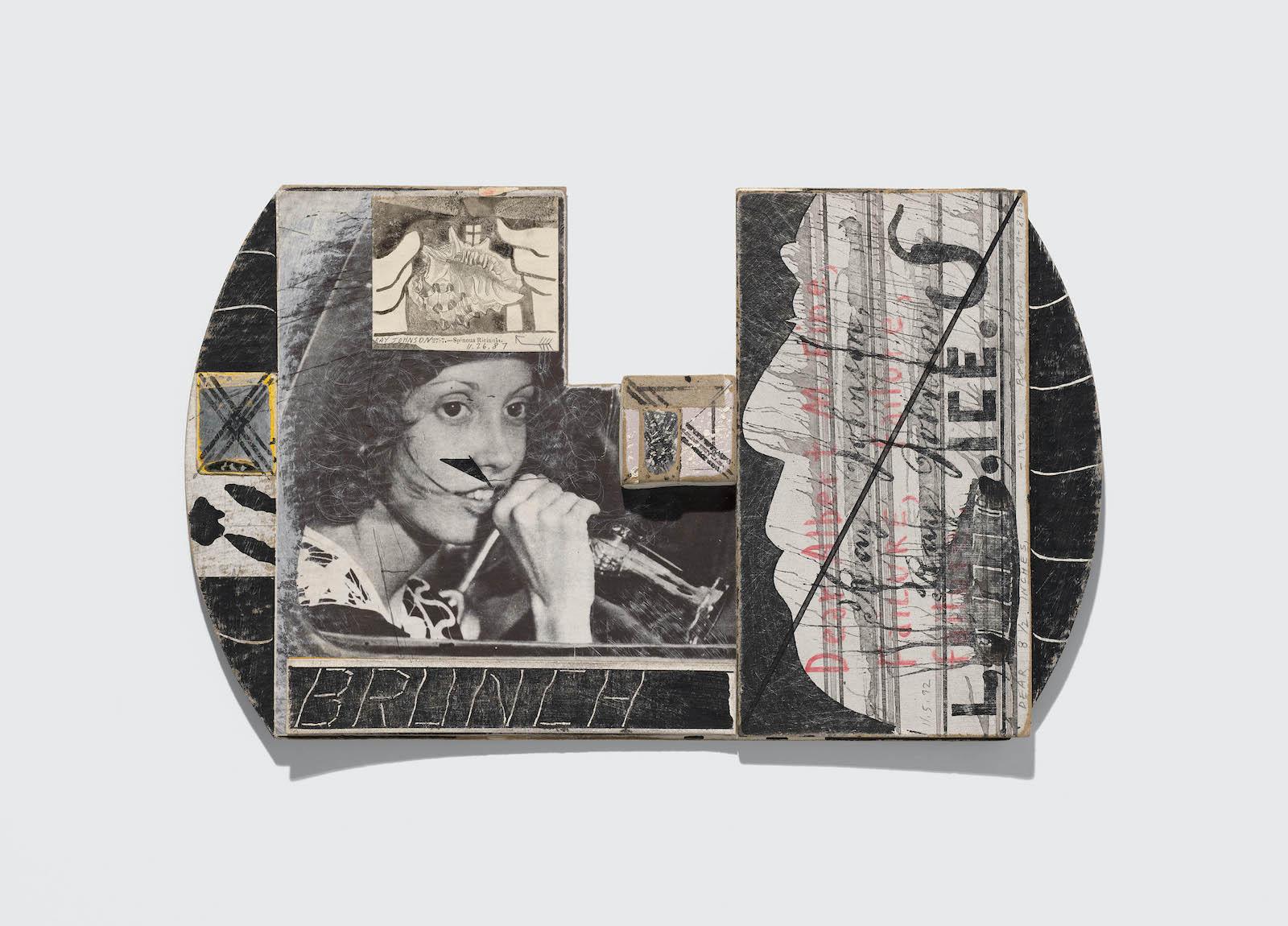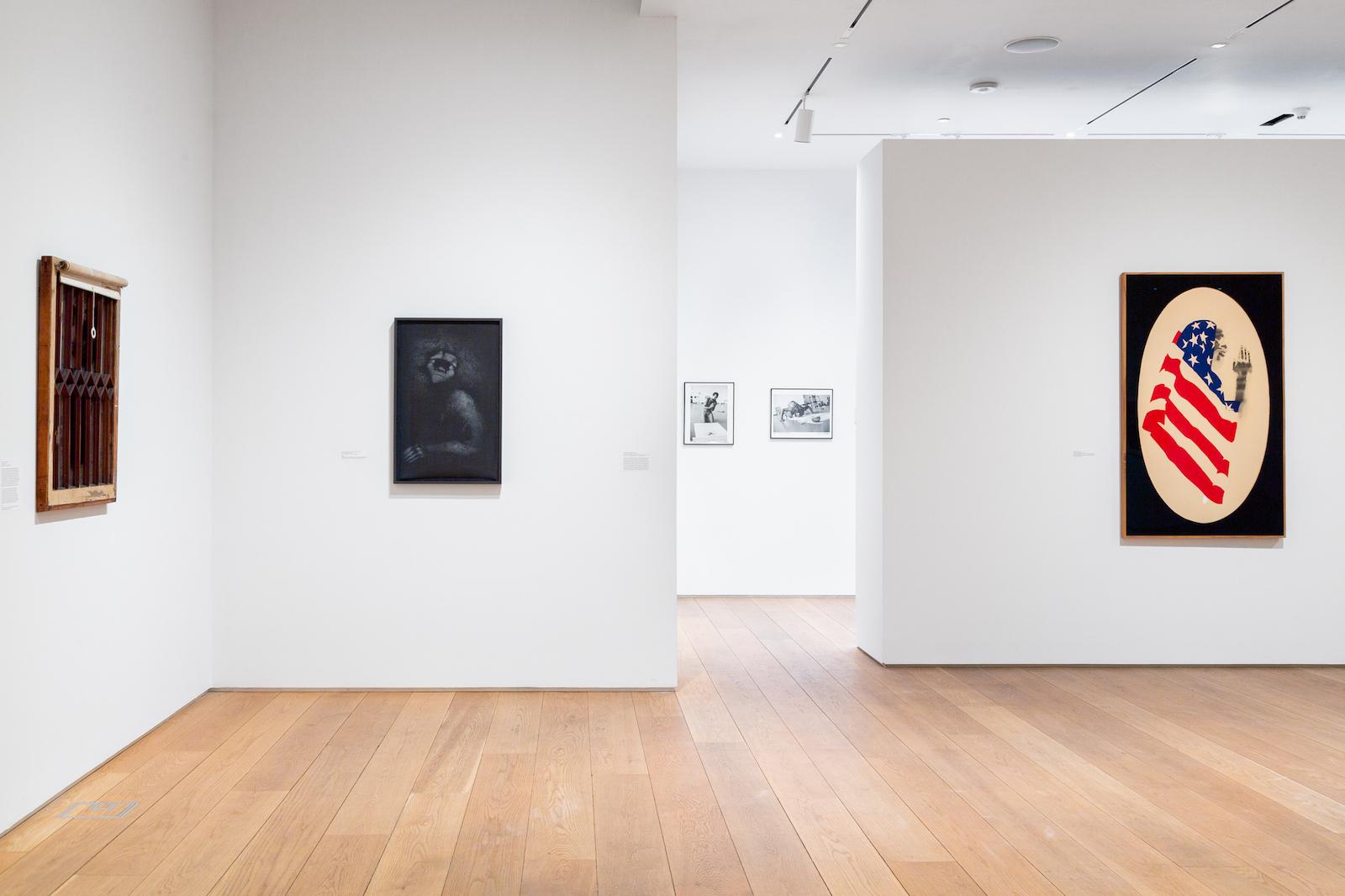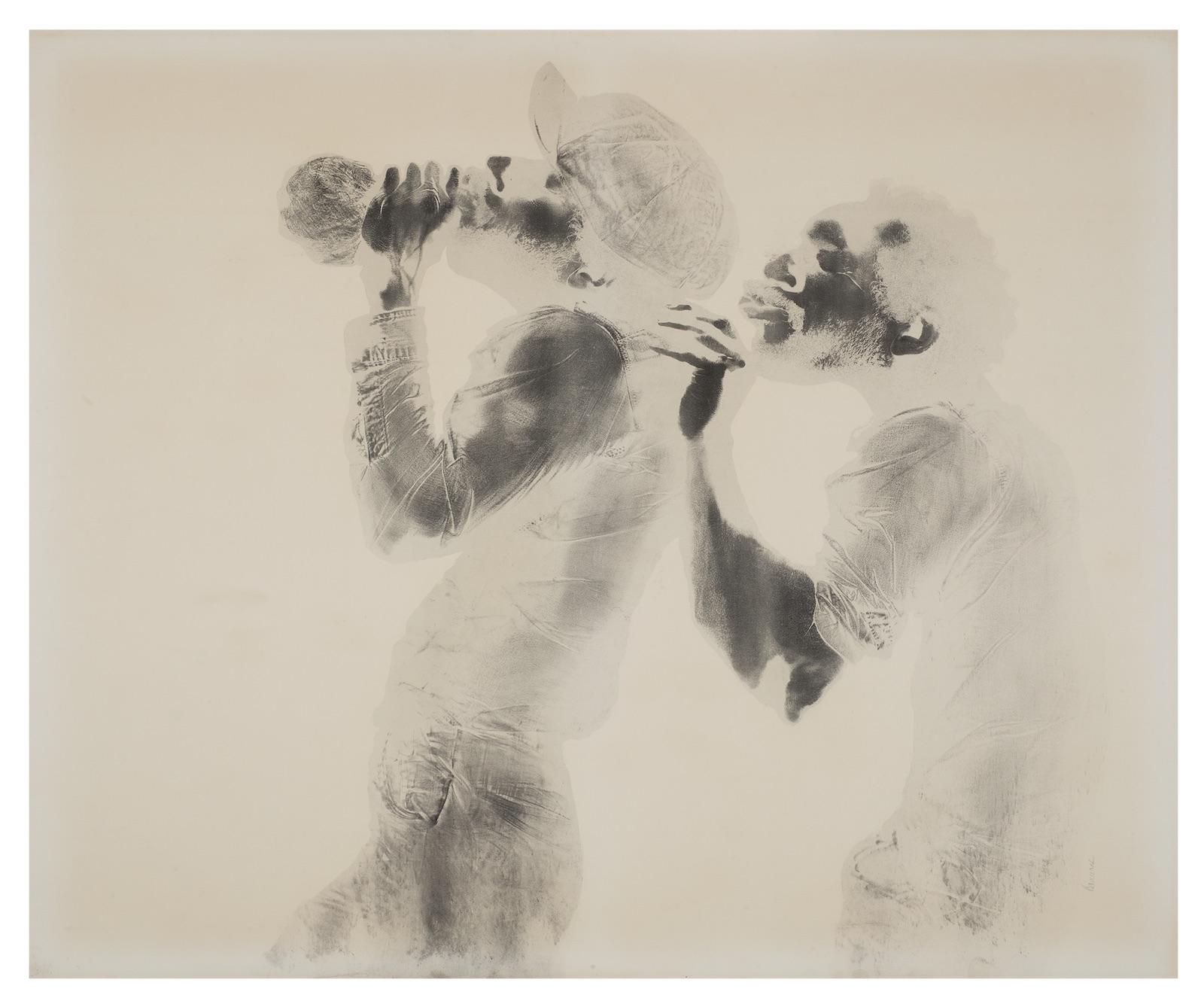While sharing graphic concerns with the Pop artists, their work was dramatically different in content. Rather than embracing consumer society, the Narrative Figuration artists took a more critical view of it. They were also more politically engaged—even before the civil unrest of May 1968, which shook all of France, and more after it. Because of these social concerns, the movement attracted the interest of such venerable French philosophers as Jacques Derrida, Gilles Deleuze, and Michel Foucault.
The movement was founded by the young painters Bernard Rancillac and Hervé Télémaque, who organized the Mythologies Quotidiennes (Everyday Mythologies) exhibition with French art critic Gérald Gassiot-Talabot at the Museum of Modern Art of the City of Paris in 1964. In the Taittinger show, there’s a 1966 painting by Rancillac, Fin tragique d'un apotre de l'Apartheid (Tragic End of an Apostle of Apartheid), that turns a political photo from a South African newspaper into a montage of colors and forms, while Télémaque’s 1970 canvas, Contamination verte (Green Contamination), juxtaposes a precisely painted clasp from a woman’s garter belt with a portable closet to comment on consumer consumption.





